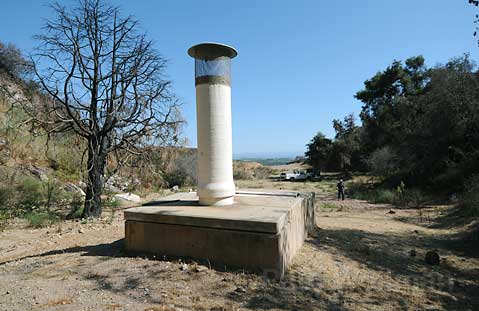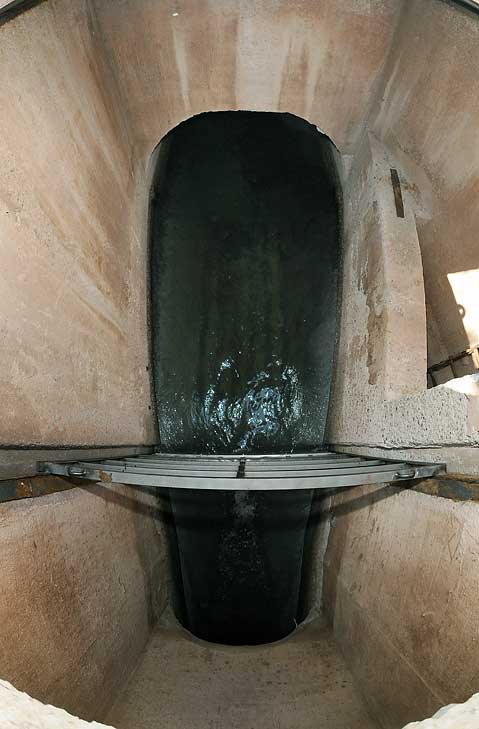Secondary Water Delivery System Delayed
COMB Districts Dispute over Costs to Build "Second Barrel" Supply Line

Despite its plan to begin construction on several water supply reliability projects as early as next year, the Cachuma Operations and Maintenance Board (COMB) may have to wait. Chief among COMB’s list of projects is a $9 million second pipeline – dubbed the “second barrel” – that would run from the ocean-side outlet of the Tecolote Tunnel at the base of the Santa Ynez Mountains to the Corona del Mar water treatment plant in Goleta. Agency head Kate Rees says the second barrel is a vital improvement in restoring the South Coast Conduit to its full capacity, which has been diminished during high demand periods. Other projects include repairs to a damaged section of the conduit that runs across Mission Creek – although the fact that it is a creek crossing requires an expensive fish passage mitigation in conjunction with any work done – and repairs to aging vents and lateral pipes (particularly in the southernmost sections of the conduit where they are part of the Carpinteria Valley Water District’s distribution system). Rees said that allowing the second barrel project to stall for too long endangers millions of dollars of funding provided by Proposition 50 (the CALFED Watershed Program), as well as making it necessary to reopen the bidding process for construction. The most recent spate of bidding, which closed on September 10, brought in a bid $1 million below the estimated project cost.

While managers and boards of the four involved South Coast water agencies are in agreement that second barrel and Mission Creek repairs are needed, the manner by which they are funded has been a point of contention since the projects were proposed earlier this year. Originally, a $16 million bond issue was proposed by COMB, with cost sharing based upon percentages agreed upon when Lake Cachuma began serving water to the South Coast in the late 1950s. However, the Carpinteria Valley Water District – which is saddled with a huge surplus of state water plus a significant debt from that and several major capital improvement projects the district has had to fund over the past several years – has resisted the bond issue. Stating the need to reevaluate cost-sharing percentages based upon all uses of the South Coast Conduit – including passage of state water, which was not available when the original agreement was drawn up – should be factored in. The Montecito Water District further complicated the negotiations when its board decided that they would pay for COMB’s projects with the district’s own funds – a move that changed the balance of the bond issue agreement.
The Goleta Water District responded to what some of its board members called waffling, and indicated that although they had already approved COMB’s plans, they would wait to see what Carpinteria decided to do before finalizing their decision. Carpinteria seems tentatively interested in getting the projects going, but Carpinteria General Manager Charles Hamilton expressed the doubts of his board at last week’s meeting, calling for more detailed analysis of agencies using COMB facilities without paying. Namely, La Cumbre Mutual Water Company, the Morehart Land Company, and Raytheon Inc., all of which use state water delivered through COMB pipes. Hamilton said that his board was reluctant to enter into an agreement when they hadn’t received more firm guarantees that issues such as this would be looked at seriously. “The inclusion of [non-COMB-member agency] users in the cost-sharing agreement must be addressed,” he said. “We are taking a really big leap of faith considering all of the issues we have identified [in the current agreement.]” He demurred when asked for a more detailed response, but his board is scheduled to discuss the matter further at their next meeting on November 11.
COMB will meet on November 23, at which time Rees called for a vote by her board. All four South Coast districts – as well as the Santa Ynez River Water Conservation District Improvement District #1, which also uses Cachuma water, albeit not through the expensive trans-mountain delivery system relied upon by South Coast customers – must approve the list of projects and the means of funding if any of them are to begin. In a constantly changing scheme of movable parts, it is anyone’s guess what the next challenge will be.



